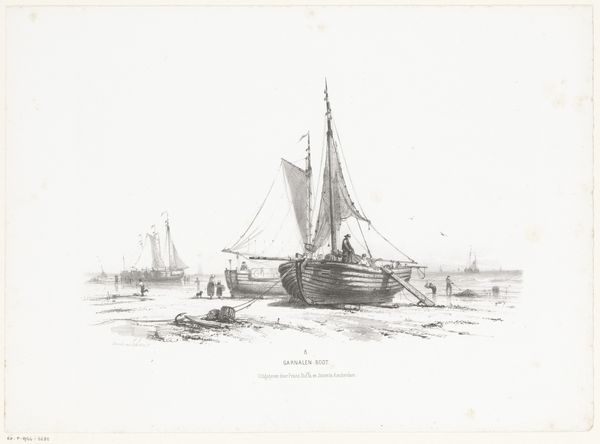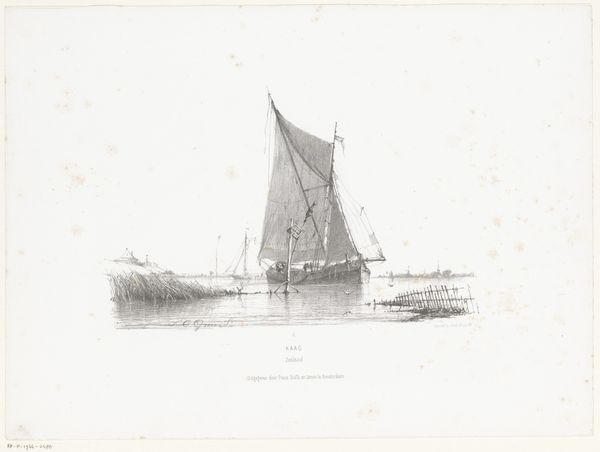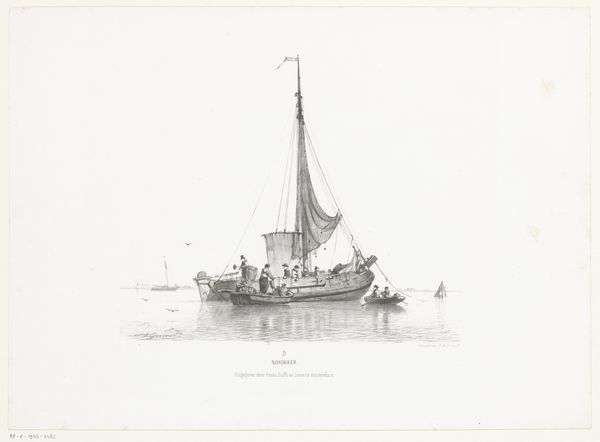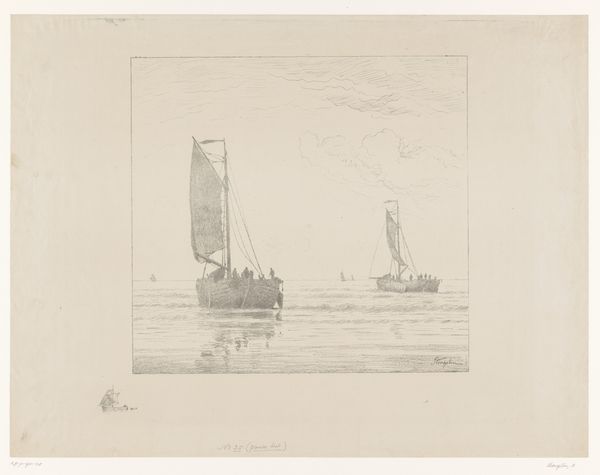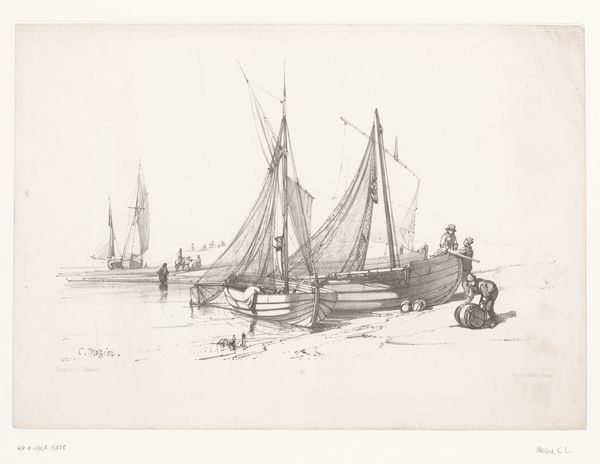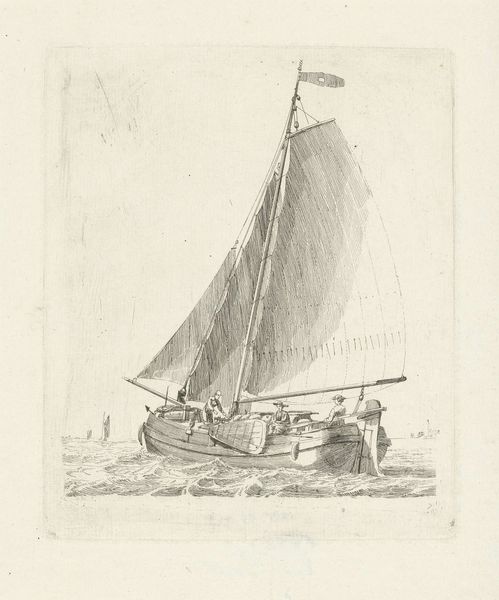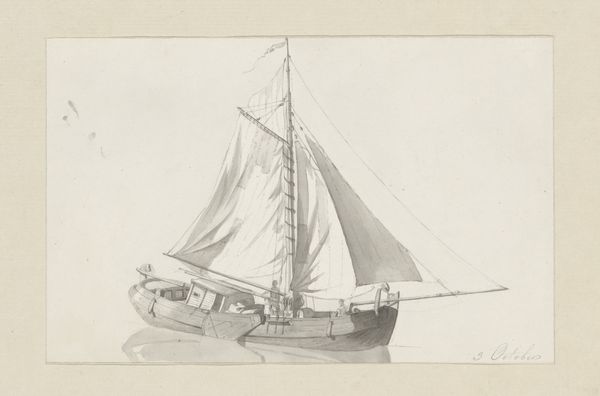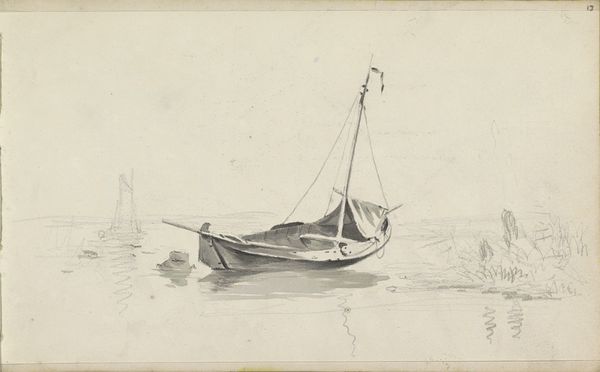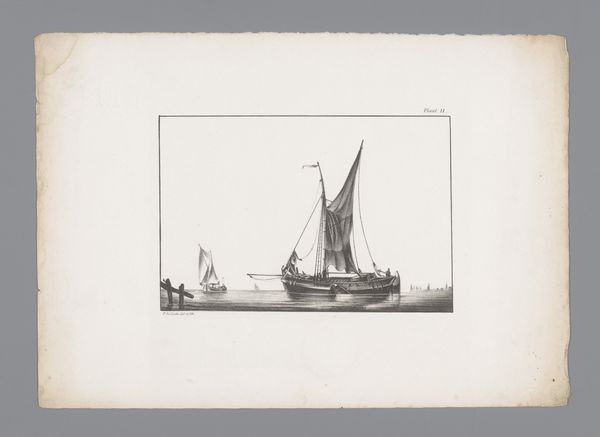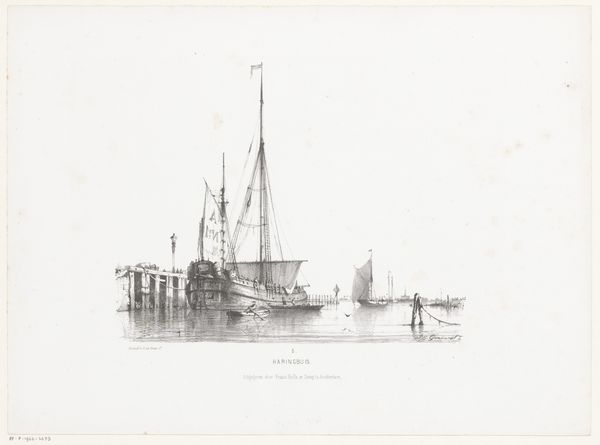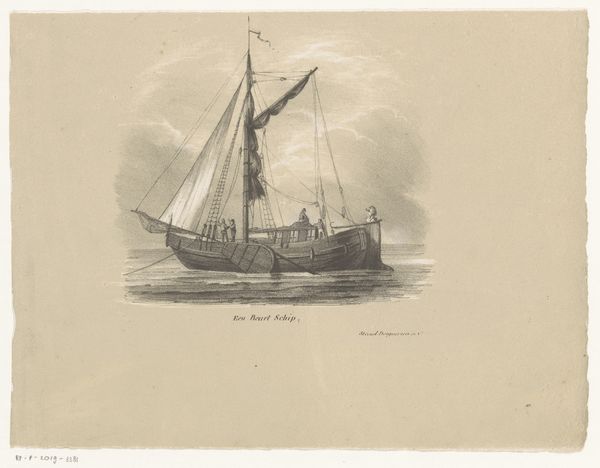
drawing, print, etching, graphite
#
drawing
# print
#
etching
#
landscape
#
graphite
#
cityscape
#
realism
Dimensions: height 269 mm, width 368 mm
Copyright: Rijks Museum: Open Domain
Editor: This is "Kopjacht," a drawing and etching by Johan Conrad Greive, made around 1860. It feels very precise, almost photographic in its detail, yet there is something quite peaceful about the overall composition. What do you make of it? Curator: Focusing on form, observe the artist's meticulous handling of line. Notice how varied line weights create a sense of depth and texture, particularly in rendering the water. How do these graphic elements contribute to the overall sense of "peaceful composition" you identified? Editor: I think it's the subtle gradation of tone in the sky that gives it that placid quality, contrasting with the sharper lines in the waves. Also, the boat is balanced, stable. Curator: Precisely. Now, consider the formal relationships at play. The interplay of positive and negative space directs the viewer's eye towards the subject. How does the composition guide our interpretation of the maritime scene? Editor: The dark silhouette of the boat against the brighter background emphasizes its presence. It’s the only clear object; it seems like we are meant to see this and little else. The lack of color creates a timeless effect too, right? Curator: Indeed. The monochromatic palette concentrates attention on tonal variations and surface qualities, stripping away distractions of colour, guiding our focus to purely structural concerns. It encourages an appreciation of formal order and the subtle complexities that lie beneath. It's also remarkable how line quality can invoke a sensation of motion within the static image, creating the visual effects of time. Editor: I hadn’t thought about it that way – focusing on the line and form completely changes how you experience the work. It almost makes you forget what it is "of" and to see it as simply what it is. Curator: Exactly. Understanding an artwork is often about engaging with its fundamental visual language and deconstructing it based on its constituent elements. Hopefully, these tools will help guide you as you keep exploring visual culture!
Comments
No comments
Be the first to comment and join the conversation on the ultimate creative platform.
